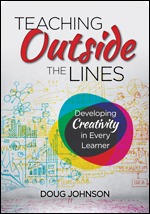How many 'puters should your library have?
 Saturday, December 8, 2007 at 08:48AM
Saturday, December 8, 2007 at 08:48AM These sorts of e-mails are always interesting and challenging:
Our [high] school is in the process of redesigning the library and I was hoping you could help us out. As we look at our plans for the new space, we want to make sure we have enough computers. However, through researching this topic, I haven't found an exact answer. Is there an exact answer?
Our population is 1740 and as of now, we will have 125 computers (a mix of laptops and desktops) in the new space. Is this enough? What does best practice say?
 I responded:
I responded:
I don't know that there is a hard and fast rule about how many computers ought to go in a library. It depends a great deal on your school program/philosophy (project-based teaching needs more), other computer resources available (do you have computer laptop carts, other labs, classroom computers), the media center staffing (don't put in more computers than you can supervise), size of your student population, class size, etc. Do you plan to begin a 1:1 laptop program in the near future? Do allow/encourage students to use their personal computing devices?
I believe for schools not in a 1:1 program, a 1:4 ratio of computers to students is now about standard. I am not aware of any national standards that are sufficiently quantitative to refer you to. Have you checked to see if your state has standards for this?
I would strongly recommend having two separate computer "areas" - one dedicated to library research resources/catalog access for general library users, and a second or additional areas for whole class use/instruction. We tend to set these off with windows so the area is a part of the library, but there is noise containment. Might you also need a separate production lab for high-end computing needs like video rendering?
Whatever you decide, make sure it is JOINT decision reached by teachers, administrators and parents (even students), not a recommendation made only by the library staff.
I am not very pleased with my suggestions. Blue Skunk readers, your advice on how many computers should a library contain?










